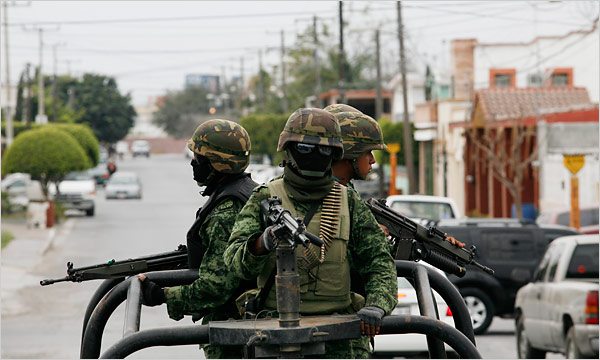The fight of state versus non-state groups has characterized warfare in the 21st century; these last include a wide assortment of terrorists, insurgents, pirates, and criminals. Theaters of operation are as varied as the enemy, ranging from the jungles of Colombia to the mountains of Afghanistan, the coast off Somalia to cyber-space. Urban and suburban settings have generally increased and, with it, the need for governments to provide sufficient services and execute the rule of law. This variety of threats poses a challenge for security forces, which are generally underfunded and themselves neglected by the fast changing shape of their enemies. Lack of appropriate police and justice systems generally lead to power-vacuum spaces where crime develops. Old and new democracies have turned to their legacy cold war militaries to face these new adversaries and, in some cases, provide the only visible presence of the state. Thus, democracies are faced with the problem of not having the appropriate forces to deal with the problem, which in some cases require good judges and social workers rather than soldiers. The correct terminology for this type of conflict is still a matter of debate, and is subjective to cultural as well as political needs.
Mexico’s armed forces are in the midst of a transformation to better perform in an ongoing war against organized crime. Their role and visibility have escalated considerably since President Felipe Calderon assumed office in December of 2006.
Although the fight against organized crime is clearly a law enforcement matter, the absence of effective and accountable police forces has meant that the Army, Navy, and Air Force have been used as supplementary forces to defend the civilian population and enforce the rule of law. While the federal government has striven to stand up a capable police force in order to relieve and eventually replace the military, that possibility is still distant. Five years into the Calderon administration, the armed forces continue to be the main implementers of the National Security policy, aimed at employing the use of force to disrupt the operational capacity of organized crime.
Their strong institutional tradition, professionalism, submission to political control, and history of interaction with the population mainly through disaster relief efforts have made them the most trusted institution in Mexican society.
Mexico’s armed forces have long been used as an instrument of the state to implement all kinds of public policies at the national level, from emergency vaccinations, to post-earthquake rescue, to reforestation campaigns. They have been at the forefront of disaster relief operations in reaction to the calamities of nature, within and beyond their borders, with humanitarian assistance deployments to Indonesia, the United States, Haiti, and Central America among the most recent.
The Mexican armed forces are quite unique, as they are divided into two separate cabinet-level ministries: the Secretaría de la Defensa Nacional (the Secretary of National Defense or SEDENA), which encompasses the Army and Air Force, and the Secretaría de Marina (the Secretary of the Navy or SEMAR), which comprises the Navy. The level of engagement with society and the results obtained from this division in military power confirms the utility of their independence.
Their use as the state’s last line of defense has led to severe criticism from opinion leaders, opposition forces, international analysts, and human rights organizations. Their level of commitment remains unaltered and they have undertaken a number of significant transformations to better address their continued roles as the guardians of the State and protectors of the population.
[Download not found]The views expressed in this report are those of the author and do not necessarily reflect the official policy or position of the DefenceTalk.com.










